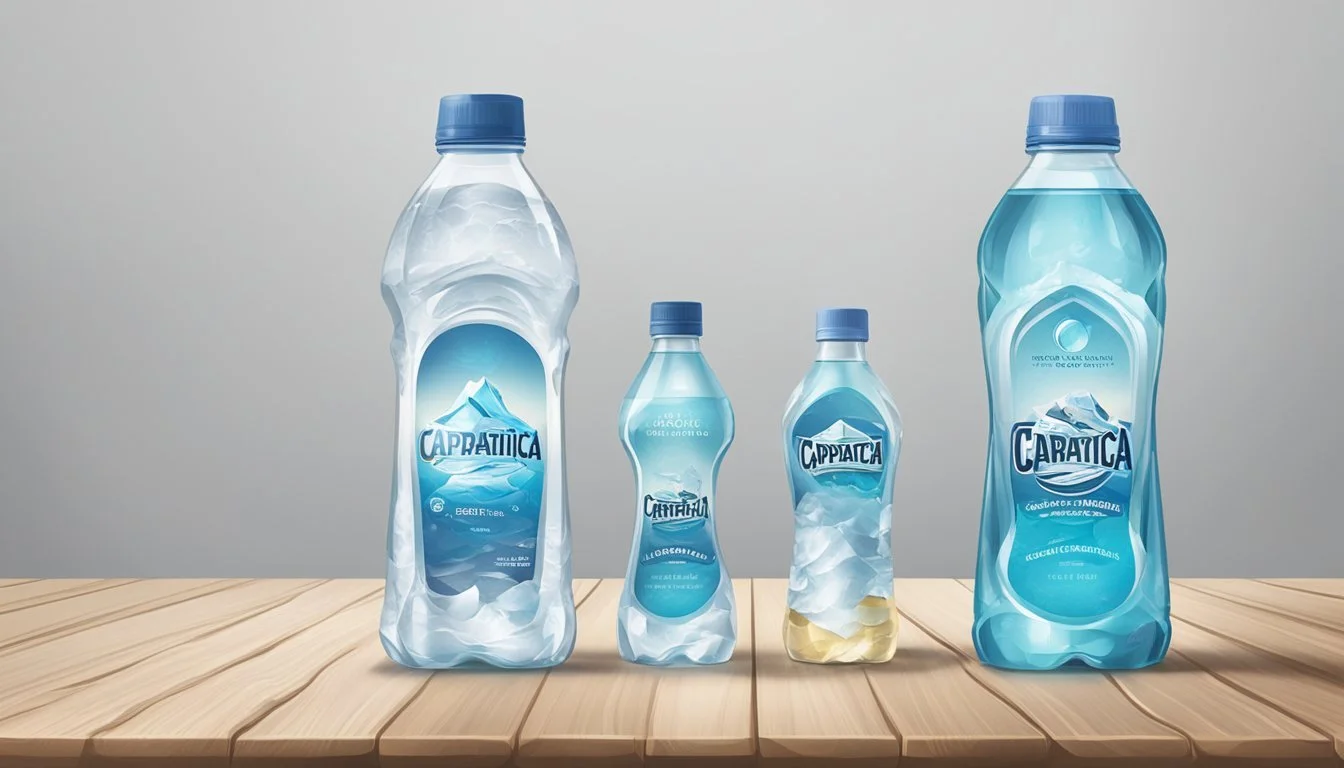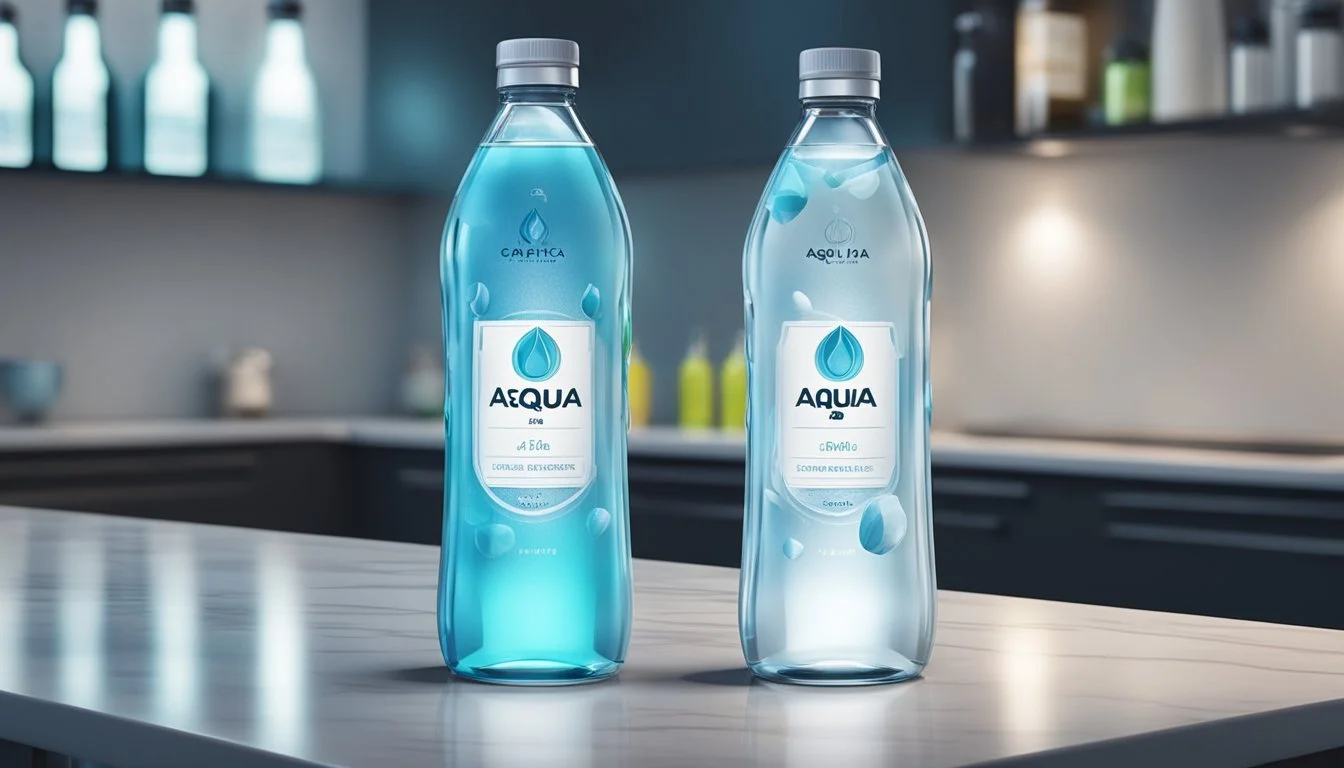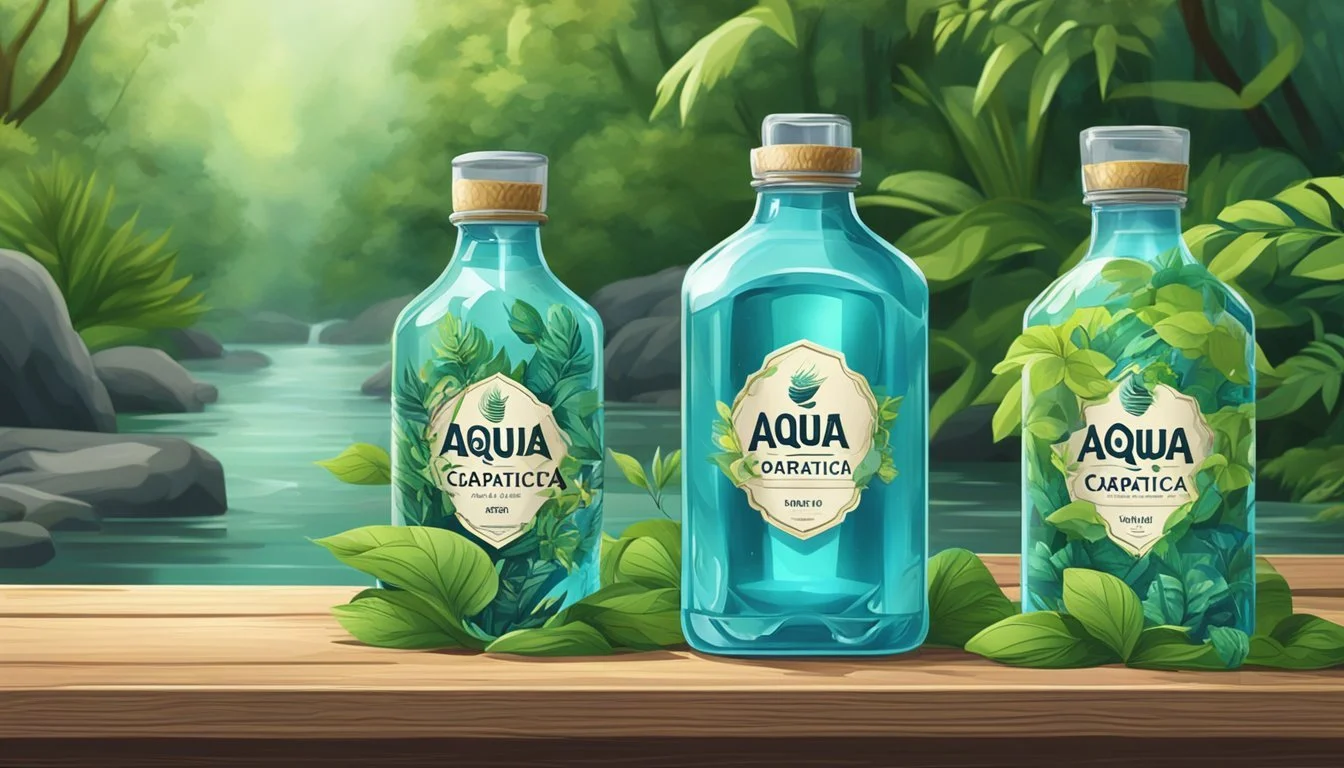Aqua Carpatica vs. Liquid Death
A Comparative Analysis of Bottled Waters
Choosing the right bottled water can elevate a simple drink to a refreshing and healthful experience. When comparing Aqua Carpatica and Liquid Death, it becomes clear that each brand offers unique benefits. Aqua Carpatica hails from the pristine Carpathian Mountains and is celebrated for its exceptionally low nitrate levels, making it a popular choice for those seeking purity and sustainability.
In contrast, Liquid Death brings an edgy twist to the bottled water market with its innovative aluminum cans and bold branding. Sourced from the Austrian Alps, this water offers a combination of sustainability and distinctive style. The brand’s use of recycled materials for its cans also appeals to environmentally-conscious consumers.
Whether you prioritize the mineral purity of Aqua Carpatica or the eco-friendly and stylish packaging of Liquid Death, both brands stand out in a crowded market. Ultimately, the choice depends on individual preferences regarding health benefits, taste, and environmental impact.
Background on Bottled Water
Bottled water is a diverse category with varying types, standards, and quality considerations. Understanding these factors helps in making informed choices about what to drink.
Types of Bottled Water
Still Water: Often labeled as spring or purified water, still water is non-carbonated. Spring water is sourced from natural springs and typically retains its mineral content. Purified water is processed to remove impurities and might come from any water source.
Sparkling Water: Also known as carbonated water, it contains dissolved carbon dioxide gas, which creates bubbles. Sparkling water can be naturally carbonated from the source or artificially carbonated during bottling.
Natural Mineral Water: This contains minerals originating from its source. According to regulations, it cannot undergo any treatment that changes its original mineral composition.
Alkaline Water: Known for its higher pH level, alkaline water is often marketed for its potential health benefits. It's usually enriched with minerals like calcium and magnesium during production.
General Water Quality Considerations
Water quality in bottled water can impact taste and health benefits. Minerals and electrolytes like magnesium, calcium, and potassium are essential components. They vary significantly between brands.
Purity: Some bottled waters undergo rigorous filtration processes to ensure purity, free from contaminants like bacteria, chemicals, and heavy metals.
Taste: The mineral content and treatment processes affect the taste of bottled water. Water sourced from different geographical regions can have distinct flavors due to the natural minerals absorbed during the flow.
Packaging: Quality is also influenced by the packaging. Aluminum cans and BPA-free plastic bottles are preferred to avoid leaching of harmful substances into the water.
Regulatory Standards for Bottled Water
In the United States, bottled water is regulated by the US Food and Drug Administration (FDA), which sets standards for safety and quality. These standards often align with those set by the US Environmental Protection Agency (US EPA) for tap water.
Labeling: Bottled water labels must clearly state the type of water, treatment methods, and mineral content if it's labeled as mineral water.
Testing: Regular testing is mandated to ensure bottled water complies with microbiological, physical, and chemical standards. Companies must adhere to good manufacturing practices to prevent contamination.
International Standards: Many countries have their own regulatory bodies, but organizations like the World Health Organization (WHO) provide guidelines to ensure global safety and quality standards.
Comparative Analysis of Aqua Carpatica and Liquid Death
The following sections analyze Aqua Carpatica and Liquid Death in terms of their origins, taste, health benefits, environmental impact, and pricing, providing a clear distinction between these two bottled water brands.
Source and Origin Comparison
Aqua Carpatica originates from the Carpathian Mountains in Romania. This region is known for its untouched natural beauty, and the water is naturally nitrate-free, which makes it particularly appealing for those seeking purity.
Liquid Death, in contrast, sources its water from the Austrian Alps, another pristine location. Both sources are noted for their clean and high-quality water. The Austrian Alps provide mountain spring water, contributing to the freshness that Liquid Death is known for.
Taste Profile and Aftertaste
Aqua Carpatica has a clean, crisp taste with a neutral pH, making it refreshing and smooth on the palate. Its nitrate-free composition contributes to the purity and lack of any chemical aftertaste.
Liquid Death is available in both still and sparkling varieties. The sparkling option is popular for its carbonation, which adds a fizzy sensation that many find invigorating. The Mountain Water version is plain, providing a straightforward, clean flavor. Comparatively, Aqua Carpatica offers a more neutral taste profile.
Mineral Content and Health Benefits
Aqua Carpatica boasts a balanced mineral content, including essential elements like calcium and magnesium, which are beneficial for hydration and overall health. The water’s naturally low sodium levels are another health advantage, making it suitable for those monitoring their sodium intake.
Liquid Death also contains a variety of minerals, though the exact composition can vary. The lack of added flavors in their Mountain Water version ensures that it remains a healthy choice. Both brands provide important minerals but differ in their specific composition and emphasis on health benefits.
Environmental Impact and Packaging
Aqua Carpatica uses glass bottles and aims to be environmentally friendly. The decision to opt for glass helps reduce plastic waste, making it a sustainable choice.
Liquid Death, on the other hand, is known for its unique aluminum cans, which are highly recyclable and contain 70% recycled material. This choice not only differentiates its branding but also highlights a commitment to reducing environmental impact. Both packaging options underscore a focus on sustainability.
Price Point and Availability
Aqua Carpatica is available in various retail outlets, including international platforms like Amazon and Ocado. Its price can vary depending on the region but typically falls within a premium range due to its health and purity claims.
Liquid Death is sold at many retailers, including Whole Foods and Target, often priced around $1.62 to $1.69 per can. The accessible price point, combined with widespread availability, makes it an appealing option for a broader audience. Although both brands cater to different market segments, each offers clear value for its target customers.
Product Offerings and Varieties
Both Aqua Carpatica and Liquid Death offer distinct types of bottled water to cater to varying customer preferences. They provide options for still and sparkling waters, various flavors, and multiple serving sizes for accessibility.
Sparkling versus Still Water Options
Aqua Carpatica: Aqua Carpatica features both still and sparkling water varieties. The still water is marketed as natural spring water sourced from Romania, providing a clean and mineral-rich drinking experience. Their sparkling waters are advertised as naturally carbonated with a higher mineral content than their still counterpart.
Liquid Death: Liquid Death offers both still and sparkling water options as well. Their spring water is sourced from the Austrian Alps and packaged in aluminum cans. The still water offers a clean, fresh taste, while the sparkling version provides a crisp, slightly mineral-y flavor.
Flavored Variants
Aqua Carpatica: This brand primarily focuses on non-flavored water offerings. Both their still and sparkling waters are marketed based on purity and natural taste, rather than flavors. Aqua Carpatica emphasizes the natural mineral content and the pristine source of their water.
Liquid Death: Liquid Death extends its offerings to include flavored sparkling waters. Some popular flavors include Black Cherry, which adds a sweet yet tart twist to the effervescent experience. These flavored options cater to those looking for a refreshing alternative to plain water or traditional sodas.
Serving Sizes and Accessibility
Aqua Carpatica: Aqua Carpatica offers different bottle sizes to cater to specific needs. Still water is available in a 500 mL bottle, while sparkling water is offered in a 750 mL size. This variety ensures that both those in need of daily hydration and those seeking a larger quantity for events are covered.
Liquid Death: Liquid Death features water in aluminum cans which come in convenient sizes for easy consumption. They offer both single cans and multi-pack options for their still and sparkling varieties. This packaging caters to individual servings and bulk purchases, ensuring accessibility through retailers such as Whole Foods, and online through the company’s website.
Consumer Perception and Brand Image
Both Aqua Carpatica and Liquid Death have cultivated unique brand images and consumer perceptions. They differ in their market strategies, messaging, and certifications, which influences their reputation among customers.
Market Position and Consumer Trust
Aqua Carpatica is known for its focus on purity and natural sourcing from the Carpathian Mountains. It emphasizes its low mineral content and nitrate-free label, aiming to attract health-conscious consumers.
Liquid Death, sourced from the Austrian Alps, has carved out a distinct niche with its edgy branding. The brand's approach has resonated particularly with younger, environmentally conscious demographics who appreciate its use of aluminum cans for sustainability.
Brand Messaging and Reputation
Aqua Carpatica promotes an image of sophistication and health, often highlighting its pristine source and natural benefits. Its marketing strategies are refined, targeting consumers seeking quality and natural purity.
Liquid Death, in contrast, uses bold and irreverent marketing to stand out. The name "Liquid Death" itself is attention-grabbing and controversial. This strategy has helped the brand build a base of loyal fans who appreciate its candid and rebellious spirit.
The Role of Certifications and Awards
Aqua Carpatica has garnered various certifications and awards for its quality and purity. These include certificates for being nitrate-free and mineral-balanced, which bolster its credibility with health-conscious consumers.
Liquid Death leverages its eco-friendly packaging, boasting that their aluminum cans are made from 70% recycled material. Although it may not focus heavily on health-based certifications, its commitment to reducing plastic waste has earned it accolades from environmental groups.
Availability and Distribution
Both Aqua Carpatica and Liquid Death are known for their unique water sources and branding. Their availability and distribution channels highlight the contrast in market strategies.
Retail Presence and Online Sale Channels
Aqua Carpatica and Liquid Death can be purchased through both physical and online retailers. Aqua Carpatica is frequently found in Whole Foods Market, where its naturally nitrate-free water appeals to health-conscious consumers. In the UK, customers can find Aqua Carpatica through Ocado, which caters to a similar demographic.
Liquid Death is widely available in grocery and convenience stores, such as 7-11 and Whole Foods Market. Additionally, it can be bought directly from the company's website or through major online retailers like Amazon. The brand's focus on eco-friendly packaging and bold marketing makes it a popular choice among younger consumers.
International Distribution Considerations
Aqua Carpatica places a significant emphasis on European markets, with strong distribution channels in the UK and other parts of Europe. Its unique selling points, such as being free from nitrates, resonate well with the health-focused segment in these regions. Distribution partnerships with major retailers like Ocado help extend its reach.
Liquid Death, on the other hand, has a broader international distribution strategy. It leverages its branding and eco-friendly aluminum cans to appeal to a global audience. The availability of Liquid Death on platforms like Amazon ensures that it can tap into various international markets efficiently. The lightweight nature of aluminum cans also aids in reducing transportation costs and environmental impact.
Environmental Considerations and Sustainability
Aqua Carpatica and Liquid Death both make notable efforts in their packaging and brand strategies to address environmental sustainability. This section examines the recyclability of their packaging and their overall strategies to minimize environmental impact.
Recyclability of Packaging
Aqua Carpatica uses PET plastic bottles which are recyclable but must be properly processed to avoid contributing to plastic pollution. They emphasize the importance of recycling practices to ensure sustainability.
Liquid Death opts for aluminum cans made from 70% recycled material, which have a higher recycling rate compared to plastic. Aluminum can be recycled indefinitely without losing quality, making it a potentially more sustainable option.
Packaging recyclability plays a critical role in reducing waste and conserving natural resources. The choice of material can significantly impact the ease and efficiency of recycling. Plastic and aluminum both have their pros and cons, but the higher recycling rates of aluminum give Liquid Death an edge in this aspect.
Brand Strategies for Environmental Footprint
Aqua Carpatica focuses on reducing its environmental footprint by promoting the use of reusable bottles and supporting eco-friendly initiatives. They aim to minimize carbon emissions associated with production and transportation.
Liquid Death communicates a strong commitment to sustainability through its marketing and operational practices. They aim to “murder” plastic pollution by encouraging consumers to choose aluminum over plastic. Their messaging underscores the urgency of environmental protection, aligning with their edgy brand persona.
Both brands invest in environmental strategies, from production processes to consumer education. Aqua Carpatica’s emphasis on reusability and Liquid Death’s focus on aluminum recycling highlight their distinct approaches to sustainability. Effective environmental strategies require continuous innovation and consumer participation to ensure long-term impact.
Comparison Summary and Conclusion
Aqua Carpatica and Liquid Death each offer unique features that appeal to different consumer preferences.
Aqua Carpatica boasts nitrate-free water sourced from the Carpathian Springs of Romania. This makes it a choice for those seeking water with high purity and low sodium levels.
On the other hand, Liquid Death sources its water from the Austrian Alps, emphasizing its aluminum packaging. This choice reduces plastic waste and supports eco-conscious consumers.
Key Features
Aqua Carpatica:
Source: Carpathian Springs, Romania
Nitrates: None
Sodium: Low
Packaging: Plastic bottles
Liquid Death:
Source: Austrian Alps
Nitrates: Not specified
Sodium: Not specified
Packaging: Aluminum cans (70% recycled)
Hydration
Both brands provide excellent hydration, but Aqua Carpatica's low sodium content may be beneficial for those monitoring their salt intake.
Liquid Death’s aluminum cans can offer a cleaner taste experience as aluminum is less reactive with minerals than plastic.
Pricing
Aqua Carpatica is often found in premium grocery stores, whereas Liquid Death is also available in eco-friendly outlets like Whole Foods.
Health and Environmental Impact
Aqua Carpatica markets on purity with natural mineral content and environmental respect. Liquid Death focuses on eliminating plastic waste and uses recyclable materials, aligning with modern sustainability goals.
Each water brand presents clear benefits, from health considerations to environmental impact, catering to distinct consumer needs.







